Reviews
La sirène du Mississipi
François Truffaut
France / Italy, 1969
Credits
Review by Leo Goldsmith
Posted on 10 April 2010
Source MGM/UA DVD
From the moment we first see Catherine Deneuve in Mississippi Mermaid, standing in brilliant tropical sunshine, wearing a light Yves Saint Laurent sundress and a sunhat cocked over one eye, we know that she is not all that she seems. “Don’t you recognize me, Mr. Mahé?” she asks with a note of feigned innocence, a canary in a wicker cage dangling playfully at her side. “I am Julie. Julie Roussel.” But Louis Mahé does not recognize her. She is not the same plain, demure woman in the photograph sent to him by Julie Roussel, the woman with whom he has been corresponding via personal ads, the woman who has supposedly traveled from France to the tiny island of Réunion in the Indian Ocean in order to marry him. And yet, because this woman looks like Catherine Deneuve, he doesn’t mind. She asks, “Do you forgive Julie Roussel for lying?” And he responds, “I find it adorable.”
Truffaut once said of Deneuve: “Catherine isn’t a flower. A woman, a flower, those are silly. Even less a bouquet. Catherine is a vase, in which the audience places the bouquet.” On the surface, such a description of Deneuve as cipher or empty vessel might seem a bit backhanded, representing a typically male directorial notion about the function of actresses. But his comment also subtly points out Deneuve’s ability to confound expectations: she is beautiful in an almost mythic way, but not especially pretty or charming, and her porcelain features suggest a willful inscrutability, an indifference to interpretation.
This quality is exploited in Buñuel’s Belle de jour to confound the expectations of a number of men, but Deneuve’s character in Mississippi Mermaid she has only one target: Louis Mahé. As played by Jean-Paul Belmondo, Mahé is an odd mix of characteristics himself. An ancestor of the French settlers of Réunion and wealthy heir of a tobacco exporter, he lives alone with his fortune in a verdant colonial paradise. Being Belmondo, he is thick set, cocky, and bit simple-minded. And yet he’s also an unshakable romantic: once married to Julie, he is completely and compulsively devoted to her, even when her stories become more implausible, when her lies become more pronounced and apparent, and when she empties his bank account and flees to Europe. Intent on revenge, Louis follows her trail to Antibes in the south of France, but he soon finds that he’s still in love with “Julie†- whose real name, he learns, is Marion, and he resignedly refuses to end the relationship, in spite of a flood of increasingly dire consequences.
In this way, Truffaut’s description of Deneuve’s resistance to interpretation might apply equally well to his own film: Mississippi Mermaid hints at a number of different genres, changing so mercurially in plot, location, and tone that it becomes increasingly difficult to pin down. On the one hand, it’s a film that wears its influences on its sleeve, and even in its credits. The film is dedicated to Jean Renoir and even briefly quotes his film La marseillaise, but this quotation only seems to do so to explain the revolutionary origins of the island’s name—the film itself does not seem directly evocative of Renoir. More suggestive still is the fact that this is the second of Truffaut’s two Cornell Woolrich adaptations, following closely on the heels of 1968’s The Bride Wore Black. But though it boasts sex, murder, a big score, and a pair of lovers on the run, Mississippi Mermaid is a much less conventional thriller, if only because the film’s central mystery is dispelled about halfway through. And the tropical setting of the first section seems to undercut any sense of noirish intrigue created by the jagged, anxious strings of Antoine Duhamel’s score (which Truffaut later disparaged).
The influence that seems at once most superficial and most internalized is, once again, Hitchcock. Truffaut had published his book-length interview with the director in 1967, and he borrows a number of motifs and images from the director here: a cacophonous soundtrack of bird-sounds in the Réunion sequences; driving shots and a nightmare sequence evocative of Vertigo; images of criss-crossing train-tracks, also in the nightmare sequence, inspired by Strangers on a Train; and a notable tumble down a flight of stairs practically spoofing Arbogast’s death in Psycho. Most of all, the film echoes Marnie, another story of a fallen woman with a false identity forced into marriage with a wealthy man, but it plays like a rather shaggy-dog retelling. Truffaut shares Hitchcock’s fascination with conspicuous, fetishized, or semiologically loaded object: a wedding band that doesn’t fit; a bird in a cage; a wedding photograph cut in two; a steamer trunk that Julie doesn’t care to open; Julie’s frilly underthings, which Louis ceremoniously burns when she doublecrosses him. But Truffaut’s approach to these objects is dramatic, not dialectic; he’s more interested in how his performers manipulate objects, and has no interest in the clinical way Hitchcock manipulates both performer and object (Cary Grant and a glass of milk in Suspicion, say) in the service of more abstract ideas.1
Nor is Truffaut interested, as Hitchcock is with Sean Connery in Marnie, in building up the brusque machismo of his protagonist. Indeed, his casting of Belmondo — sort of the French equivalent of Connery — as a sentimental masochist, prone to breakdowns and losses of nerve, is a sign that the film’s real subject is masculine frailty, and a certain pigheaded romantic devotion born out of desperation and loneliness. Opening the film with a montage of personal ads from newspapers, read in voiceover, Truffaut establishes a tone of deeply suppressed longing for love at any cost, confirmed by Louis when he tells the woman he believes to be Julie: “I have to readjust myself to you. I must learn to know you.”
Only a connoisseur of problematic relationships like Arnaud Desplechin would call this “a perfect love story”2 — and yet, why not? Louis is a man who wishes to be devoted, to save a wayward woman from herself, and in Julie/Marion he has found the sort of woman who cannot help but push his devotion to the limit. The way in which Truffaut portrays the evolution of their relationship – from oppressive chastity to furtive breast-groping to unhinged emotional manipulation to irrevocable co-conspiracy – suggests the many roads to romantic compromise. Answering a personal ad is only one of the many ways of resigning oneself to the imperfect arrangement of love, which for Truffaut is inevitably perverse, painful, and necessary.
- Truffaut also had a totally different working method to his great hero and mentor, who prepared his scripts meticulously before shooting. Deneuve reports that Truffaut was writing dialogue more or less as he went—lines for the following day’s shoot slipped under the hotel room door during the night. The film’s ending - anti-climactic and yet very effective in a way that seems to prefigure Robert Altman’s McCabe & Mrs. Miller - was more or less improvised.↩
- See Eric Hynes’ interview with Desplechin at Stop Smiling.↩
More Love on the Run: The Films of François Truffaut
-

Les Mistons
1957 -

Une histoire d’eau
1958 -

The 400 Blows
1959 -
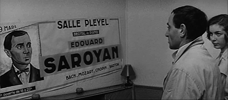
Shoot the Piano Player
1960 -

Jules and Jim
1962 -
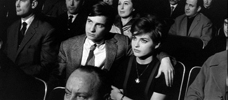
Antoine and Colette
1962 -

The Soft Skin
1964 -

Fahrenheit 451
1966 -
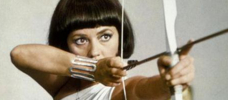
The Bride Wore Black
1968 -

Stolen Kisses
1968 -

Mississippi Mermaid
1969 -

The Wild Child
1970 -

Bed and Board
1970 -

Two English Girls
1971 -
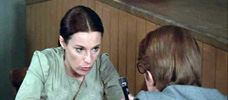
Such A Gorgeous Kid Like Me
1972 -

Day for Night
1973 -
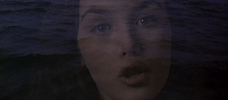
The Story of Adele H.
1975 -

Small Change
1976 -
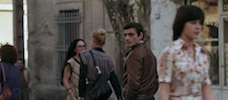
The Man Who Loved Women
1977 -
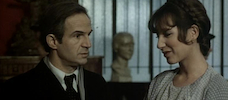
The Green Room
1978 -
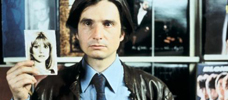
Love on the Run
1979 -

The Last Metro
1980 -

The Woman Next Door
1981 -
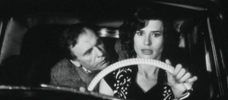
Confidentially Yours!
1983
We don’t do comments anymore, but you may contact us here or find us on Twitter or Facebook.



